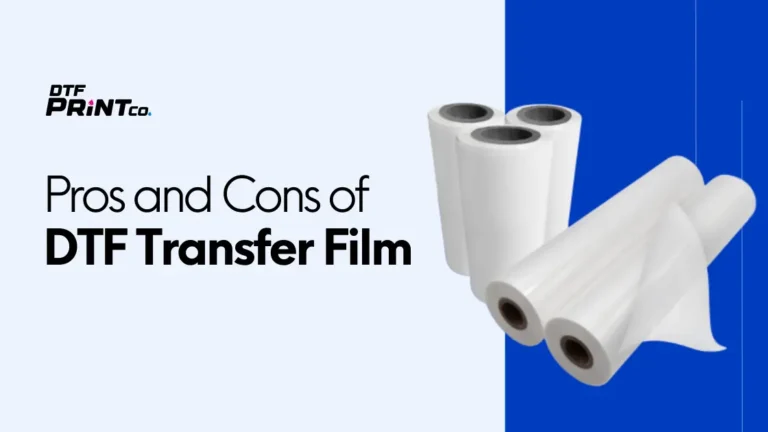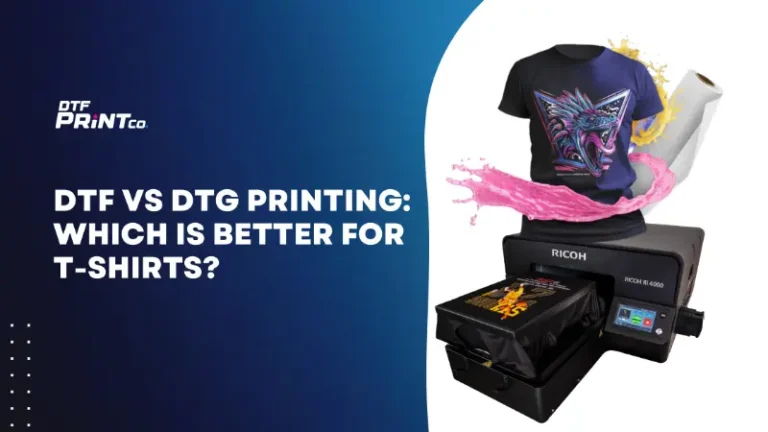
Pros and Cons of DTF Transfer Film: Should You Use It in 2025?
DTF transfer film offers vibrant, durable prints on multiple fabric types with fewer setup costs than screen printing. It’s ideal for small batches and complex

In this blog post, we’ll explore 8 essential features to look for in a DTF printer to help you make an informed decision.
This concise guide helps in making an informed decision when purchasing a DTF printer.
One of the most critical aspects of any printer is its ability to produce high-quality prints. For DTF printers, this means achieving sharp, vibrant images with accurate color reproduction. Look for printers that offer high resolution, typically measured in DPI (dots per inch). A higher DPI ensures finer detail and smoother gradients, which are essential for intricate designs and professional-grade prints.
Color accuracy is paramount, especially if you’re aiming for precise brand colors or intricate color gradients. Ensure the printer uses advanced color management systems and a wide color gamut to reproduce colors faithfully. Consistent color output across multiple prints is also vital to maintain a uniform look in bulk orders.
In a business environment, time is money. A DTF printer with high-speed capabilities can significantly boost your productivity and turnaround times. Look for printers that offer rapid print speeds without compromising on quality. Some high-end models can print several A4 sheets per minute, which is ideal for businesses with high-volume demands.
Efficiency isn’t just about speed. The ease of setup and maintenance plays a crucial role in overall productivity. Opt for user-friendly printers, with straightforward installation processes and intuitive interfaces. Additionally, printers that require minimal maintenance and have easy-to-access components for cleaning and troubleshooting can save you valuable time and reduce downtime.
A DTF printer is an investment, and you want it to last. Look for printers constructed with high-quality materials and components that can withstand continuous use. Metal frames and sturdy parts are indicators of durability, ensuring that the printer remains reliable even under heavy workloads.
Reliability is key to maintaining smooth operations. Choose a printer known for its consistent performance, minimizing the risk of jams, errors, or downtime. Reading reviews and testimonials can provide insights into the printer’s reliability and long-term performance.
A user-friendly interface can make a significant difference, especially if you’re new to DTF printing. Look for printers that come with intuitive software, offering easy navigation, clear instructions, and robust support for various file formats. Features like drag-and-drop functionality, design editing tools, and straightforward color management can enhance your printing experience.
Choose a printer that requires minimal training to operate effectively. Clear documentation, tutorials, and responsive customer support can help you get up to speed quickly, allowing you to focus on your creative projects rather than grappling with complicated settings.
DTF printers should support a wide range of file formats, including PNG, JPEG, PDF, and more. This versatility ensures that you can work with various design tools and software without worrying about compatibility issues. Additionally, check if the printer can handle different file sizes and resolutions to accommodate diverse project requirements.
In today’s digital age, connectivity is essential. Look for printers that offer multiple connectivity options such as USB, Wi-Fi, Ethernet, and even cloud-based integrations. Wireless connectivity can provide greater flexibility, allowing you to print from different devices without the hassle of physical connections.
While it might be tempting to opt for the cheapest printer available, it’s essential to consider the long-term value. A more expensive printer with better features, higher reliability, and lower maintenance costs can be more cost-effective in the long run. Assess the total cost of ownership, including the price of the printer, ink, film, and other consumables.
Energy-efficient printers can help reduce operating costs, especially if you run the printer for extended periods. Look for models that consume less power without sacrificing performance. Features like sleep mode or auto-shutdown can also contribute to lower energy usage.
The quality of inks used in DTF printing significantly impacts the final output. High-quality, durable inks ensure vibrant colors, excellent adhesion, and long-lasting prints. Some printers use eco-friendly or water-based inks, which can be a plus for businesses looking to adopt sustainable practices.
Ensure that the printer you choose has readily available consumables such as inks, PET films, and adhesive powders. The cost of these materials can vary, so it’s important to consider both their availability and affordability. Some brands offer bulk purchasing options or subscriptions, which can help manage costs effectively.
Even the best printers can encounter issues from time to time. Having access to reliable customer support is crucial for resolving problems quickly and minimizing downtime. Look for manufacturers that offer comprehensive support, including phone assistance, live chat, email support, and extensive online resources like FAQs and troubleshooting guides.
A solid warranty can provide peace of mind, protecting your investment against defects and malfunctions. Check the length and coverage of the warranty, and consider additional service plans if available. Extended warranties or service contracts can be beneficial for businesses that rely heavily on their printing equipment.
Choosing the right DTF printer involves careful consideration of various factors to ensure it meets your specific needs and expectations. By focusing on print quality and resolution, speed and efficiency, durability and reliability, ease of use, compatibility and connectivity, cost-effectiveness, ink and consumables compatibility, and support and warranty, you can make an informed decision that supports your business or creative endeavors.

DTF transfer film offers vibrant, durable prints on multiple fabric types with fewer setup costs than screen printing. It’s ideal for small batches and complex

Both DTF (Direct-to-Film) and DTG (Direct-to-Garment) printing are popular methods for customizing t-shirts, but each method has its strengths. DTF printing works well on various

Direct To Film (DTF) printing is rapidly becoming a popular choice for custom apparel and garment decoration. Unlike traditional screen printing or direct-to-garment (DTG) methods,

2023 - 2024 © ALL RIGHTS RESERVED